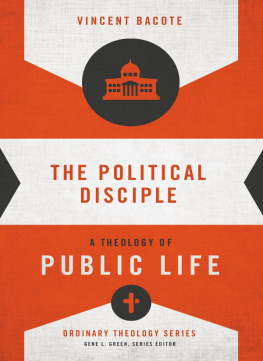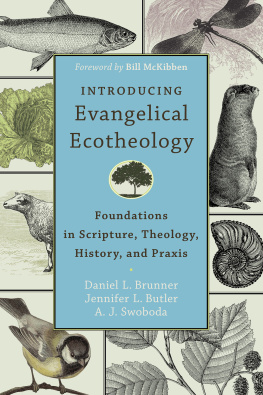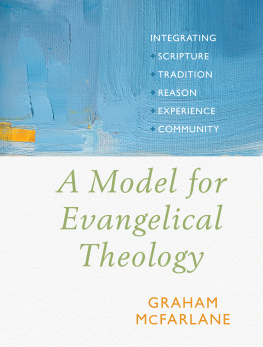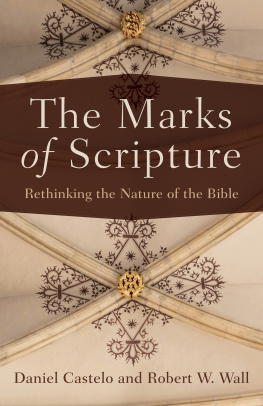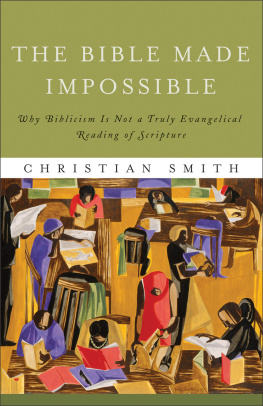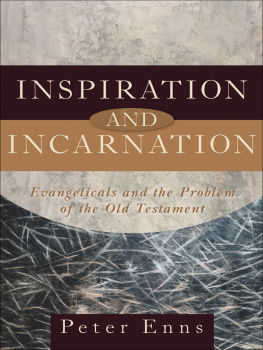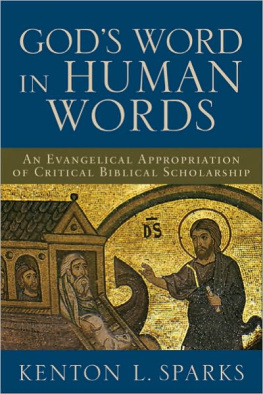Notes
Chapter 1
, "Unity and Diversity in Evangelical Faith," in The Evangelicals: What They Believe, Who They Are, Where They Are Changing, rev. ed., ed. David F. Wells and John D. Woodbridge (Grand Rapids, Mich.: Baker, 1977), 81.
development of the history sketched here, see my Renewing the Center: Evangelical Theology in a Post-theological Era (Grand Rapids, Mich.: Baker, 2000). The author expresses appreciation to Baker Book House for permission to draw from previously published materials.
, e.g., the statement produced by the 1989 consultation on Evangelical Affirmations cosponsored by the National Association of Evangelicals and Trinity Evangelical Divinity School as published in Evangelical Affirmations, ed. Kenneth S. Kantzer and Carl F. H. Henry (Grand Rapids, Mich.: Zondervan, 1990), 37-38.
, e.g., at one point identifies the material principle as "the gospel of Christ" (Kantzer, "Unity and Diversity," 73).
, 72.
, John Wesley, His Own Biographer, vol. 1 of The Elusive Wesley (Nashville: Abingdon, 1984), 149.
, Systematic Theology: An Introduction to Biblical Doctrine (Grand Rapids, Mich.: Zondervan, 1994), 15.
, Christian Theology, 3 vols. (Grand Rapids, Mich.: Baker, 1983), 1:36.
, "What Is Biblical Inerrancy?" in The Proceedings of the Conference on Biblical Inerrancy 1987 (Nashville: Broadman, 1987), 75.
of the Christian Religion 1.13.8; quotations are taken from Henry Beveridge's translation (Grand Rapids, Mich.: Eerdmans, 1989).
, 1.7.
, Sermons sur le Deuteronome, in Corpus Reformatorum, ed. Carolus Gottlieb Bretscheider (Halis, Saxony: C. A. Schwetschke and Son, 1848), 56:617.
John Calvin, Commentary on the Gospel According to John, trans. William Pringle, in Calvin's Commentaries, 22 vols. (Grand Rapids, Mich.: Baker, 1981), 17:218.
, 1.7.2.
, 1.7.5.
, A History of Christian Thought, 3 vols. (Nashville: Abingdon, 1970-1975), 3:160.
, The Rise of Evangelical Pietism (Leiden: Brill, 1971), 20.
summary, see Jack B. Rogers and Donald McKim, The Authority and Interpretation of the Bible: An Historical Approach (San Francisco: Harper & Row, 1979), 200-218.
, Scripture in the Westminster Confession (Grand Rapids, Mich.: Eerdmans, 1967), 425-26.
1.6, in Creeds of the Churches, 3rd ed., ed. John H. Leith (Atlanta: John Knox Press, 1982), 195.
, "The Sinfulness of Sin," in The Whole Works of the Right Rev. Edward Reynolds, D. D. Lord Bishop of Norwich, 6 vols., ed. J. R. Pitman (London: S & R Bentley, 1826), 1:103.
, Pia Desideria, trans. and ed. Theodore G. Tappert (Philadelphia: Fortress, 1964), 46.
, Grundlegung der Theologie, darinn dir Glaubenslehren aus gttlichem Wort deutlich frgetragen (1712), 166 (translation mine).
, German Pietism During the Eighteenth Century (Leiden: Brill, 1973), 36.
Robert S. Dell, "Simeon and the Bible," in Charles Simeon (1759-1836), ed. Michael Hennel and Arthur Pollard (London: SPCK, 1959), 44.
, Henry Moorhouse: The English Evangelist (London: Morgan & Scott, n.d.), 94.
, History of Christian Thought, 3:240.
, "A Shared Dilemma: Catholics and Lutherans on the Authority and Interpretation of Scripture," Pro Ecclesia 10 (winter 2001): 66-67.
, see Gary Dorrien, The Remaking of Evangelical Theology (Louisville, Ky.: Westminster John Knox, 1998), 21-22.
, see Braaten, "Shared Dilemma," 66.
, Institutes of Elenctic Theology, 3 vols., trans. George Musgrave Giger, ed. James T. Dennison Jr. (1679; reprint, Phillipsburg, N.J.: Presbyterian & Reformed, 1992), 1:16.
, 1:5.
, 1:55-56, 62-63.
, 1:107.
, ed., Creeds of the Churches, rev. ed. (Atlanta: John Knox Press, 1982), 310.
, e.g., asserted that the Bible is "free from all error, whether of doctrine, fact, or precept"; Charles Hodge, Systematic Theology, 3 vols. (New York: Scribner, Armstrong & Co., 1872), 1:152.
of this definition, formulated by Charles Hodge but indicative of other nineteenth-century conservatives, see George Marsden, "The Collapse of American Evangelical Academia," in Faith and Rationality: Faith and Belief in God, ed. Alvin Plantinga and Nicholas Wolterstorff (Notre Dame, Ind.: University of Notre Dame Press, 1983), 245-47.
, see John W. Stewart, "Mediating the Center: Charles Hodge on American Science, Language, Literature and Politics," Studies in Reformed Theology and History 3 (winter 1995): 26.
, Systematic Theology, 1:18.
, 1:16-17. Hodge also wrote a devotional book entitled The Way of Life (1842), reprinted in Charles Hodge: The Way of Life, ed. Mark A. Noll (New York: Paulist, 1987), 45-233. For a recent treatment of the piety of the Princeton theologians, see Andrew Hoffecker, Piety and the Princeton Theologians: Archibald Alexander, Charles Hodge and Benjamin Warfield (Grand Rapids, Mich.: Baker, 1981).
, Systematic Theology, 3:42.
, "The Bible in Twentieth-Century Protestantism: A Preliminary Taxonomy," in The Bible in America: Essays in Cultural History, ed. Nathan O. Hatch and Mark A. Noll (New York: Oxford University Press, 1982), 143.
and B. B. Warfield, "Inspiration," Presbyterian Review 2 (April 1881): 237; reprinted in A. A. Hodge and Benjamin B. Warfield, Inspiration (Grand Rapids, Mich.: Baker, 1979), 25-29. For a similar claim to be representing the teaching of the whole church, see Hodge, Systematic Theology, 1:154.
, The Inspiration and Authority of the Bible, ed. Samuel G. Craig (Philadelphia: Presbyterian & Reformed, 1948), 150.
argue that A. A. Hodge moved to this position sometime between 1860 and 1879 (Authority and Interpretation, 304).
, "Inspiration," 238-41. See also A. A. Hodge, Outlines of Theology, rewritten and enlarged ed. (London: Banner of Truth, 1879), 75.
, The Bible Doctrine of Inspiration Not Invalidated (New York: Ketcham, 1893), 180.
of this judgment by a contemporary fundamentalist historian, see Beale, In Pursuit of Purity, 138-39.
summary of the connections between the Princeton theologians and the fundamentalists, see Mark Ellingsen, The Evangelical Movement: Growth, Impact, Controversy, Dialog (Minneapolis: Augsburg, 1988), 77-80.
, Fundamentalism and American Culture (New York: Oxford, 1980), 107.
1878 Niagara Creed as an example of a statement that does not include the term inerrancy (Evangelical Movement, 53).
, Revelation and Inspiration (London: Duckworth, 1910), 213.
, 197-98.
, Institutes, 1:55-56, 62-63.
, "Inspiration," Biblical Repertory and Princeton Review 29 (October 1857); reprinted in The Princeton Theology, 1812-1921, ed. Mark A. Noll (Grand Rapids, Mich.: Baker, 1983), 140-41.
, Systematic Theology, 1:170. For a summary of the debate about the meaning of Hodge's statement, see John D. Woodbridge, Biblical Authority: A Critique of the Rogers/McKim Proposal (Grand Rapids, Mich.: Zondervan, 1982), 130-31.
, Revelation and Inspiration, 217-18.
, Fundamentalism, 117.
, Reforming Fundamentalism: Fuller Seminary and the New Evangelicalism (Grand Rapids, Mich.: Eerdmans, 1987), 3, 146. Harold J. Ockenga later claimed that he coined the term in 1947; see Ockenga, "From Fundamentalism, Through New Evangelicalism, to Evangelicalism," in Evangelical Roots, ed. Kenneth Kantzer (New York: Thomas Nelson, 1978), 38. Millard J. Erickson, in contrast, attributes the first public use of the term to Carl F. H. Henry; see Erickson, The Evangelical Left: Encountering Postconservative Evangelical Theology (Grand Rapids, Mich.: Baker, 1997), 23 n. 22.
, Beyond Fundamentalism (Richmond, Va.: John Knox Press, 1964), 28. Significant early expressions of that protest included Ockenga's "Can Fundamentalism Win America?" Christian Life and Times, June 1947. The author's answer to the query lodged in the title of the article was a resounding no! Fundamentalism was hampered by its divisive spirit, aloofness from social problems and unethical practices, he asserted. The poignancy of Ockenga's short piece was echoed in the publication of a book-length critique, Carl F. H. Henry's The Uneasy Conscience of Modern Fundamentalism (Grand Rapids, Mich.: Eerdmans, 1947). Like Ockenga, Henry chastised his fellow fundamentalists for their aloofness from society and their lack of a social vision.


